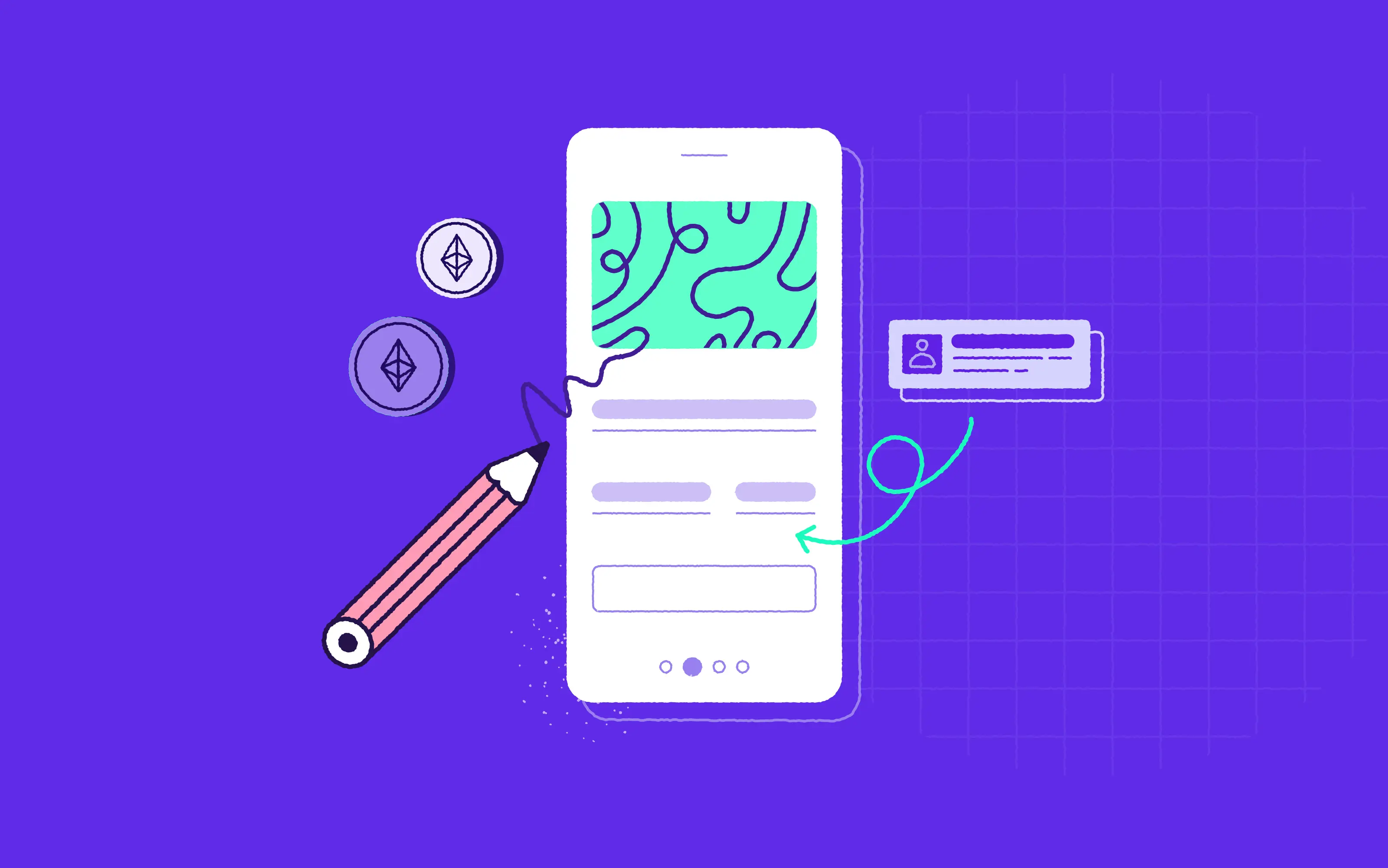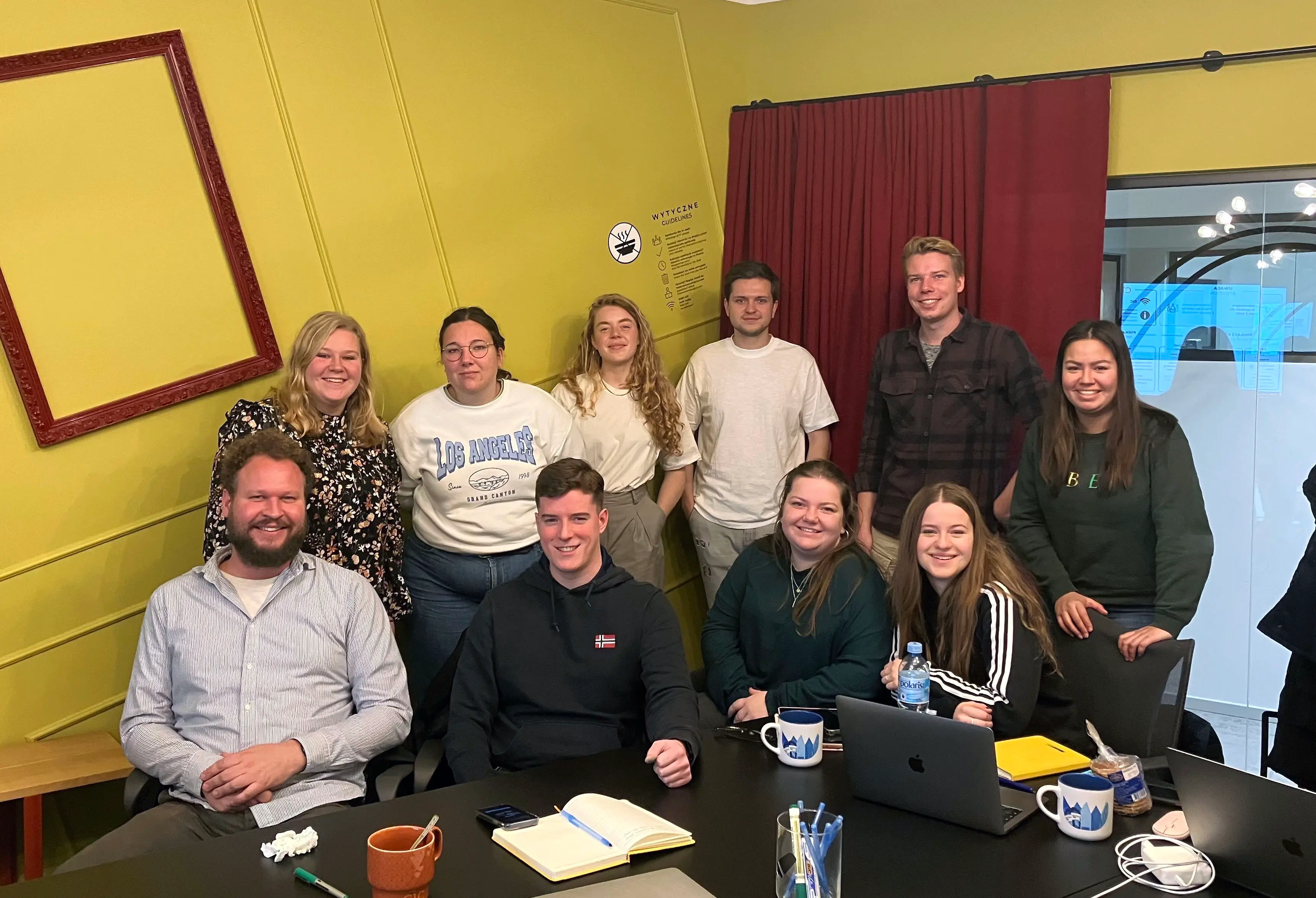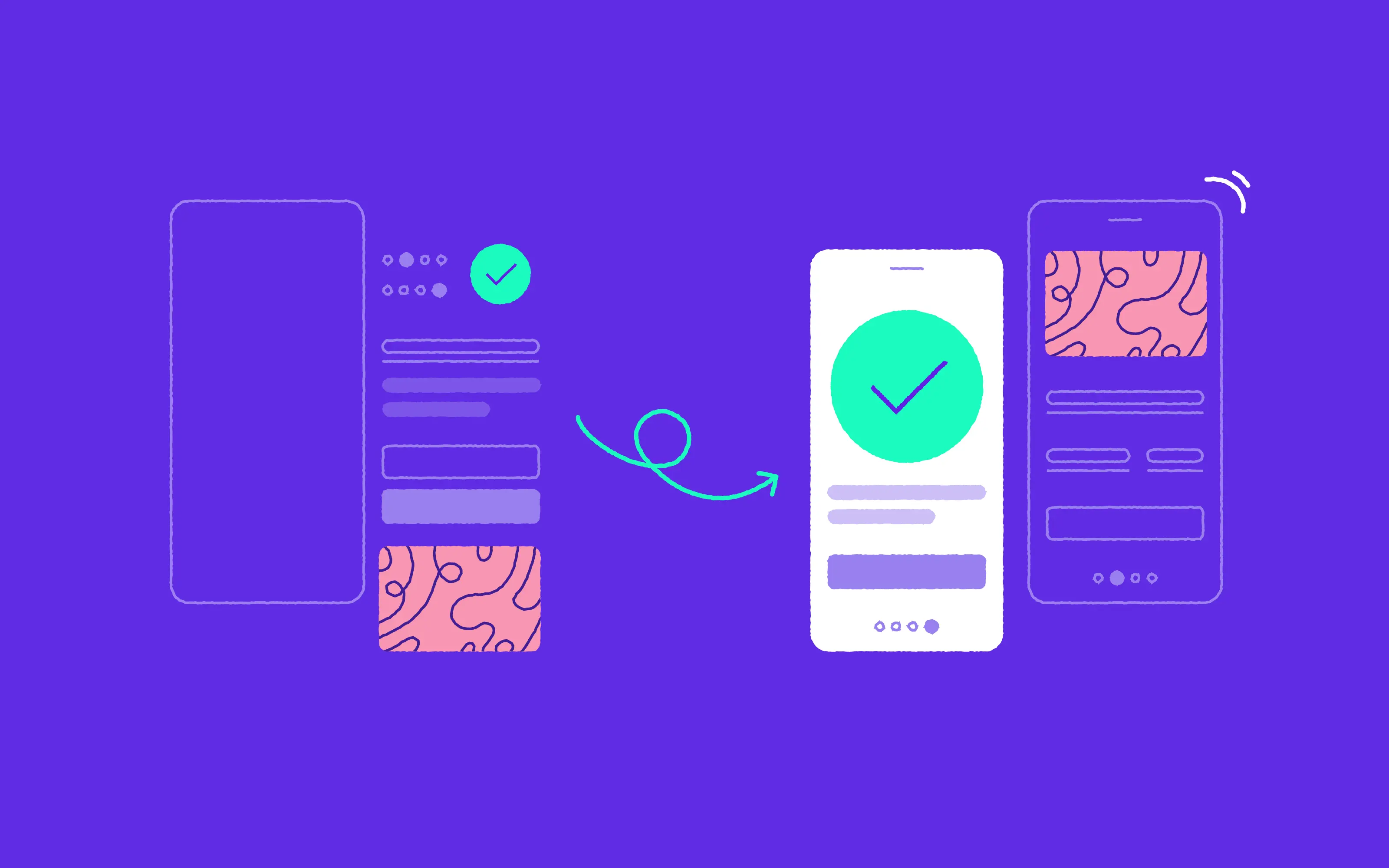Improving local voter turnout using the DAO mindset
07.12.2022 | 5 min read

What can be done to improve voter turnout at local level? Can you solve the problem of low community engagement using digital solutions? These are questions that we were trying to answer in this year’s work experience innovation week involving Co-Design Studio, a collaboration between the Design Fundamentals Academy and the University of Applied Sciences, Utrecht.
The Core Challenge
The students joined us at the 10Clouds office in Warsaw, where they worked with our Product Designer, Saveli on a core design challenge:
There are currently very few local initiatives and communities in Poland which allow citizens to be involved in local life. What can be done to change this?
Their presentation was expected to include research of the current local voting situation, an analysis of pain points, and the drawing up of an MVP solution, including user flows, a customer journey map, features and ideas for future product iterations.
The Discovery Phase
The students began by conducting a thorough evaluation of the pain points that citizens come up against in Poland, when it comes to local issues.
They found that the core bodies that look out for local issues in Poland are the Government District Administration and individual Homeowners Administrations. The Co-Design team was keen to find out how local residents of particular Warsaw districts interact with these bodies and where any potential challenges lie. They spoke with local councilors to get an insight into how processes work.
They also interviewed a number of individuals and found a pattern emerging. Residents said:
- “I don’t really have any contact with my neighbors.”
- “There were referendums a couple of years ago, but nothing has happened until this day.”
- “I’ve made a report before, but I don’t know if they did something with it.”
These could all be condensed into two core ideas:
- It takes a lot of effort and time for residents to report issues
- It’s unclear what has been done with the reported problems.
These led to the students to establish four guiding principles:
What? - ‘participation’ and ‘feeling heard’.
How? - ‘accessibility’ and ‘transparency’.
The proposed solution
The Co-Design students came up with the idea and prototype of an app on which people can vote on local issues and the Government District Administration can respond with full visibility. They can also see how many people share concerns on a particular issue.
Below are the features that would be included in the MVP:
A homepage: This invites users to vote for city initiatives using a fixed amount of tokens (5 per citizen).
A list of cases: This takes you through to cases which you’re able to vote on. E.g. voting to renovate benches in a particular city district. The cases would be split into those which are ‘open to vote,’ ‘a work in progress’ or ‘finished projects’.
User profile: Including a list of tokens that you as a resident have been allocated. Each resident receives five tokens each.
Tokens: In the MVP, the tokens are the amount of times that you can vote on cases that are important. But in subsequent versions of the app, tokens represent an amount of money - the civic budget.
Features in future iterations of the app would include a city map which includes an overview of the different projects that are being put to the vote, comments enabling users to respond to ideas, the ability to withdraw your votes, and the possibility to report problems. There was also the additional idea of push notifications for cases that are due to close shortly and which may require slightly more votes.

The DAO mindset
The students were curious about how blockchain might improve their app and this generated a discussion about ‘the DAO mindset’ - the idea that local issues should be put back into the hands of residents.
The group was given access to all the materials from the 10Clouds DeFi Academy and had a meeting with one of our designers who specializes in blockchain products.
The token economy within the app was inspired by decentralized autonomous organizations (DAOs), which are a key part of blockchain and operate using a very specific set of rules.
Future iterations of the app foresaw residents being able to put forward proposals for their own local government projects through the app.
Marketing and monetizing the app
The Co-Design Team has already been thinking ahead to how they might market and monetize the app. They felt that the easiest way to appeal to a more digitally savvy audience is through the use of QR codes, which could be located on posters in public and common spaces.
They also acknowledged that there is a certain demographic (including elderly people) that would be less comfortable with using apps, but still wanted and needed to be involved in local issues. They felt that for these people, the traditional methods of voting for local projects would still stand. The idea was that when they visited a local government office, a representative would be able to support them with their issues.
In terms of monetization, the students felt that the product could be government-funded. It could also be a business to business solution and could be financed through advertising. There was also the suggestion of selling it as a whitelabel solution for private homeowners’ associations.
What did the Co-Design students think about working with 10Clouds?
The students felt that they’d learnt a lot during the process of solving a local challenge. Here is what they had to say:
“We loved the opportunity to work together with 10Clouds”⁃ Maartje Gremmen
“Seeing the polish culture from the perspective of the residents was amazing”⁃ Lievore Tonnis, Emma van Meel
“We learned a lot of new things like DAO and Blockchain.” ⁃ Joep Mater
“10Clouds really helped us to arrange interesting meetings with experts.” ⁃ Isabel Schipper
Excited by the way 10Clouds approaches product design and development?
Why not find out more about us and see whether you might be the perfect fit for our team?



